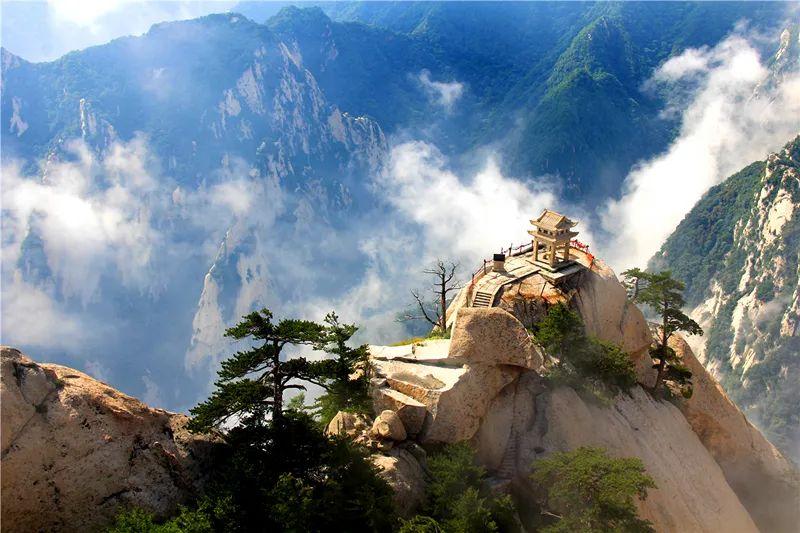
Huashan National Geopark

The Introduction of Huashan National Geopark
(November 2020)
Huashan National Geopark is located in Huayin, Weinan, Shaanxi, covering an area of 54.71 km2. In October 2017 the People's Government of Weinan submitted the national geopark application to the Land and Resources Department, and in March 2018 the qualification of national geopark was approved. At present, Huashan National Geopark is under construction.
Located in the southern margin of the North China block, the geopark is characterized by typical rock landforms and massive historical and cultural heritages. It is characterized by fault-block columnar mountains composed of Yanshanian granite of Mesozoic, dating from 200 to 65 million years ago, which reflects an outstanding example of the main stages of the evolution of the earth. Because of its ancient, complex, multi-phase and rare development and evolution, as well as the aesthetics of rock mechanism and shape, and the diversity of landscape forms, it has become a world-class or national geological landscape heritage.
According to the types, distribution, landscape features and tourism features of the geological relics and human and natural relics, Huashan National Geopark can be divided into six scenic a, namely, Hualu scenic spot (3.22 km2), Xianyu scenic spot (12.15 km2), Huayu scenic spot (7.37 km2), main peak scenic spot (7.34 km2), Sanfengshan scenic spot (5.07 km2) and Huangfuyu scenic spot (19.56 km2).
Having unique geological structure conditions and forming process, Huashan contributes special value to the international geological academic research in east Asia and even the global continental dynamics, mantle dynamics and geological changes, such as the loess plateau, in postorogenic period, and especially studies in the role of deplanation, yanshan movement and Himalayan movement in Qinling area and regional geological environment. The geological relics in Huashan National Geopark mainly include 6 categories, 12 classes and 17 subclasses. Three of the relics are typical at the world level. The first is the Huashan type granite landscape, namely high mountain fault-block granite landscape, and Huashan is the naming place and typical representative of this type of landscape with steep mountains, unique and precipitous features; the second is the Huashan Erzonite Granite, which is named after Huashan. The length of the granite is 20 km and the width is 7.5 km. It is giant granite with a single lithology, and it is a geological wonder at the world level. The third is the Huashan Pedmont Fault, which is the active normal fault with the largest drop within a short distance in a large continental block in the world, and an ideal window to carry out studies in geometry, kinematics characteristics and dynamic mechanism of the neotectonic movement in China. The unique landform and magnificent landscape of Huashan not only have high cultural value and tourism value, but also have high geoscience research value and popular science value.
Huashan has been one of the Five Mountains in China since ancient times. It is known as “the root of China” and is the birthplace of Chinese civilization. During his inspection visit to Shaanxi in 2015, General Secretary Xi Jinping emphasized that the Mausoleum of the Yellow Emperor, the Terracotta Warriors, the Yan’an Pagoda, the Qinling Mountains and the Huashan are spiritual and natural symbols of Chinese civilization, Chinese revolution and Chinese geography. In April this year, General Secretary Xi Jinping once again stressed that the Qinling, where Huashan is located, is the ancestors of the Chinese nation and an important symbol of Chinese culture during his inspection visit to Shaanxi.